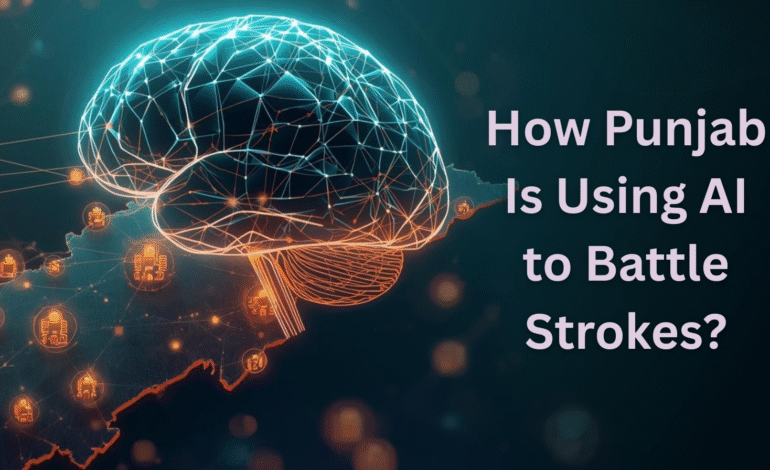
How Punjab Is Using AI to Battle Strokes – A Public Health Revolution in Progress
Punjab’s quiet health-tech experiment is beginning to save lives. In a pilot rolled out across several district hospitals, an AI system screened over 700 suspected stroke scans and helped identify six patients who were fast-tracked for thrombectomy, an intervention often reserved for tertiary centers and a procedure that can dramatically alter outcomes when performed on time.
From scan to action: the pipeline that mattered
The program operates like a clinical relay: CT/MRI images are uploaded from district centers to a secure AI server; the algorithm flags probable large-vessel occlusions or acute ischemic patterns; triage alerts are sent to neurologists and nearby stroke centers; and ambulances or referral teams are pre-notified, allowing treatment to begin upon arrival. That connectivity, not the algorithm alone, is the real innovation.
Why six thrombectomies changed the narrative
Thrombectomy windows are tight: delays translate directly into lost brain function. The fact that six patients were identified and transferred in time shows the system’s promise: minutes saved in triage can become years of functional independence for a patient.
What must be solved to scale this model?
- Imaging quality: Standardized CT/MRI protocols and improved hardware in district hospitals.
- Connectivity: Reliable, secure networks for uploading large DICOM files with low latency.
- Workforce trust: Clinician buy-in via training, transparent model performance metrics, and easy feedback loops.
- Referral capacity: More stroke-ready acute centres and ambulances to handle increased escalations.
Why other states should watch closely
Pilot success in Punjab could provide a repeatable blueprint for states with limited neurology coverage. The same pipeline image → AI triage → referral can be adapted for other urgent diagnoses, like intracranial hemorrhage or major trauma. From a policy perspective, it signals that AI can be treated as public health infrastructure, not merely a boutique tool.
Ethics, Privacy, and Governance
Deploying AI at scale requires frameworks for patient consent, anonymized data handling, secure storage, and clarity on liability in cases of model error. State health departments will need to define oversight mechanisms and clinical audit trails before full-scale rollout.
Quick FAQs
Q: Does AI replace radiologists?
A: No — it augments triage and speeds decision-making; final treatment decisions remain clinical.
Q: Is the algorithm accurate?
A: Pilot results suggest useful sensitivity for major occlusions, but accuracy depends heavily on scan quality and local validation.






